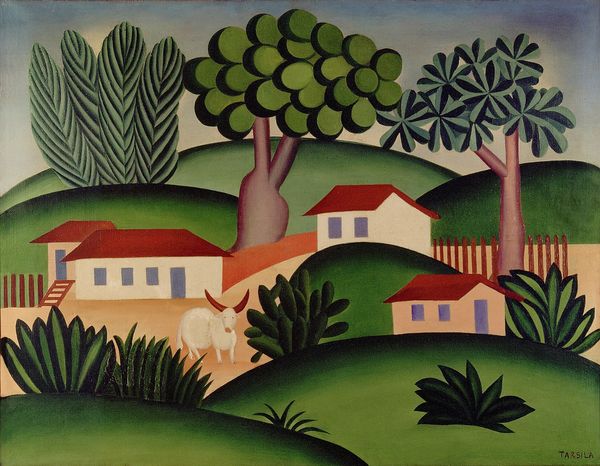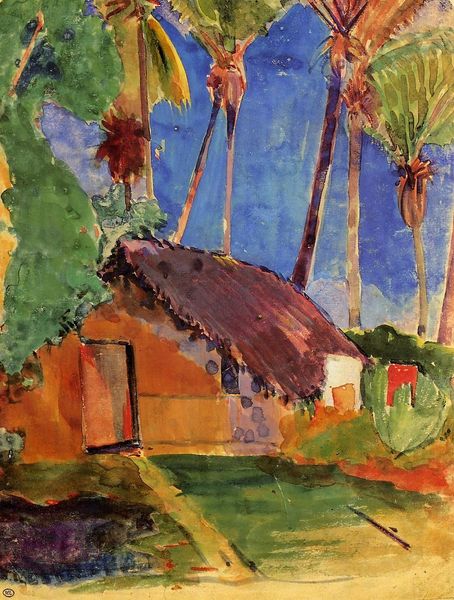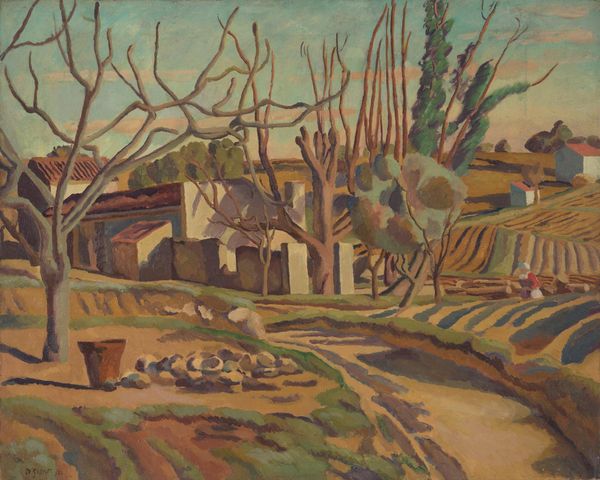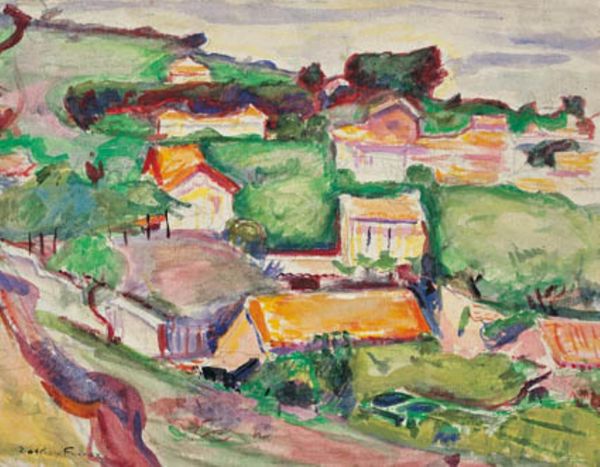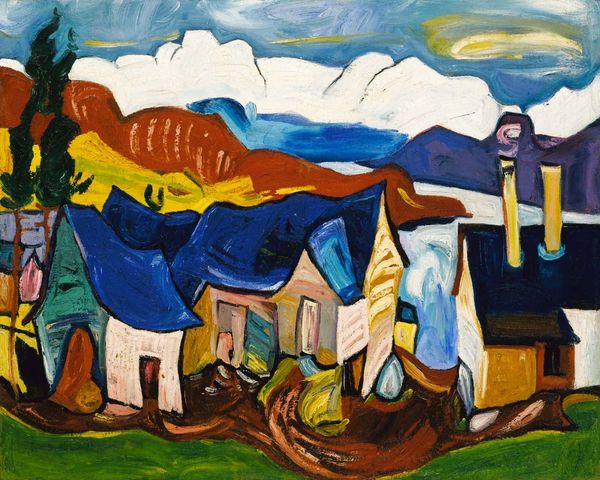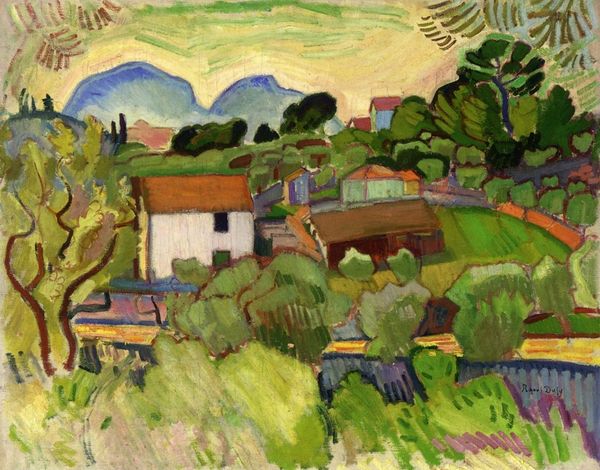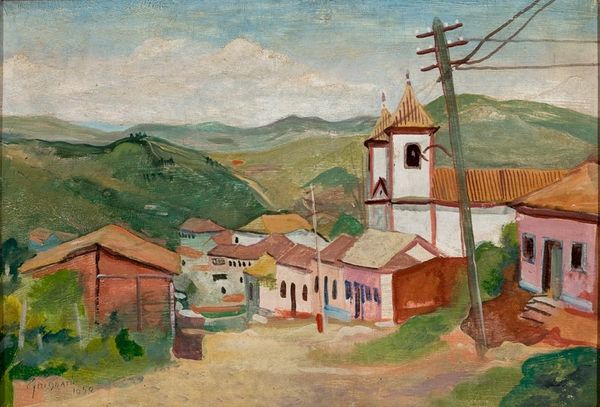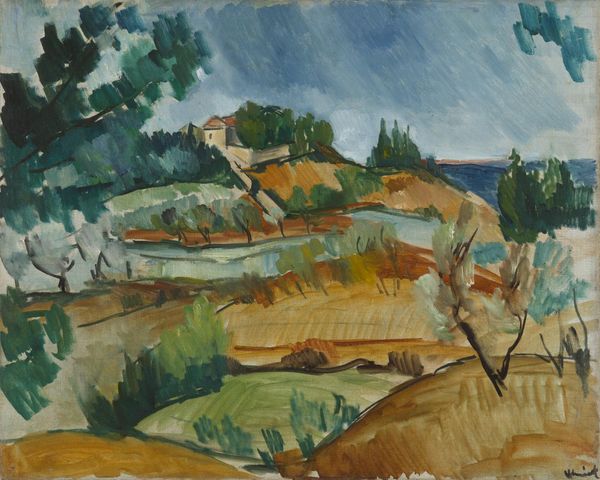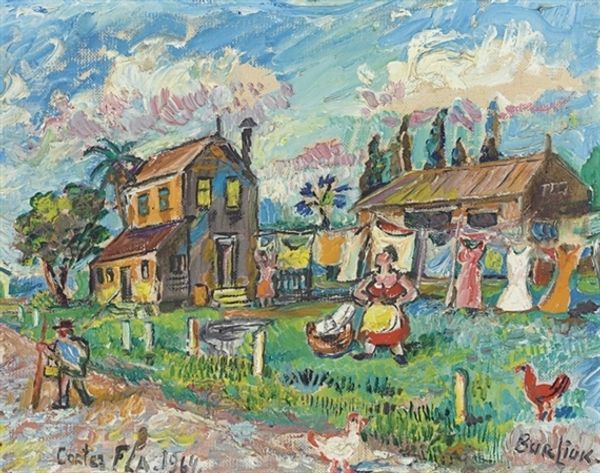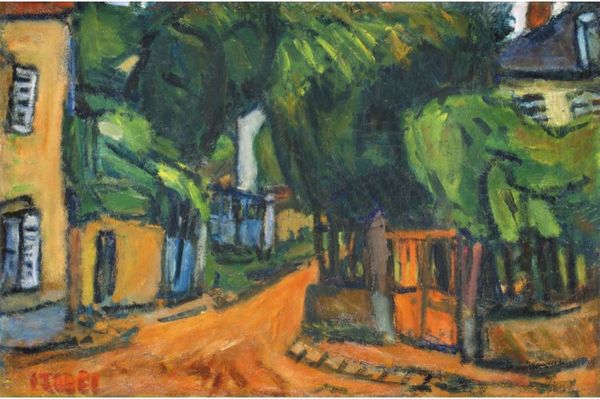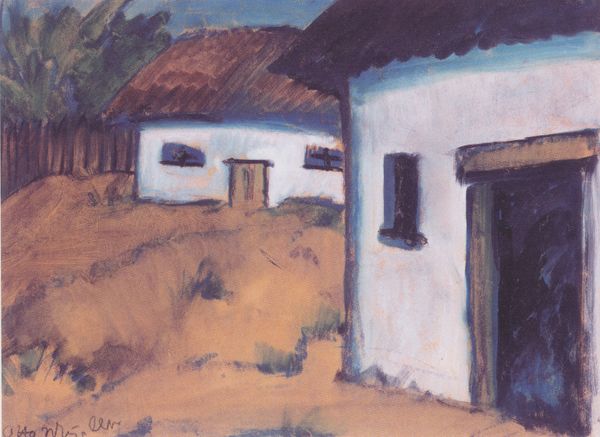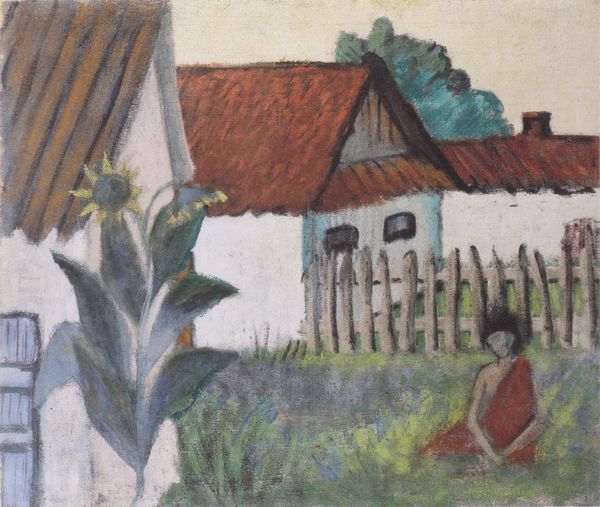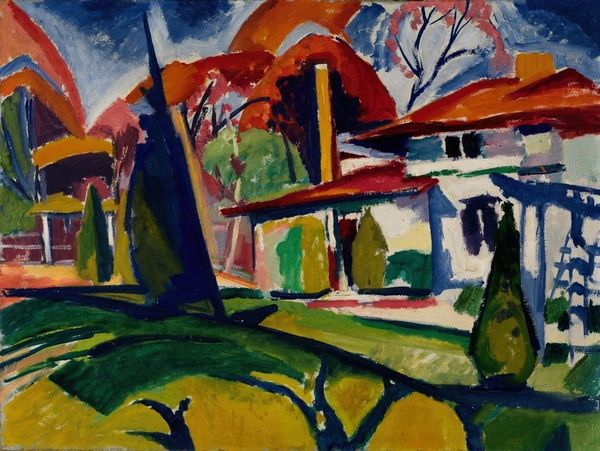
Copyright: Public Domain: Artvee
Editor: Here we have Amadeo de Souza-Cardoso’s "Small River House," created in 1913 using oil paint. It’s quite striking how the artist simplified the forms of the buildings and landscape, almost into geometric blocks. What’s your take on this painting? Curator: Immediately, I'm drawn to the materiality of this painting. The visible brushstrokes and the way Souza-Cardoso builds up the layers of oil paint suggest a deliberate focus on the physical act of creation. Consider the historical context: 1913. Mass production was rapidly transforming society. Do you think this attention to the hand-made counters industrial processes? Editor: It does seem that way! It feels like a celebration of individual craft. The colours and somewhat crude execution speak to that in ways beyond simply depicting the rural scene. Curator: Exactly. This isn't just about portraying a pretty landscape. The rough application of paint, the somewhat clashing colours – these draw attention to the artist’s labor. Notice, too, the lack of fine detail. Editor: I see what you mean. Instead of details, we get these almost architectural blocks of colour that make up the houses and hills. Curator: And this connects to the larger social picture. Souza-Cardoso was engaging with avant-garde ideas about simplifying forms, perhaps reflecting a desire to return to more fundamental, basic modes of production. Does this emphasis change your understanding of its value? Editor: It definitely adds a new dimension! I had initially perceived it as a simple, abstracted landscape, but now I recognize its engagement with labour and materiality. It almost turns the focus from the "what" (landscape) to the "how" (materials). Curator: Precisely. Considering the social and material aspects allows us to appreciate it beyond the surface level of representation. Editor: Thanks for your time! That really gave me some insight.
Comments
No comments
Be the first to comment and join the conversation on the ultimate creative platform.
